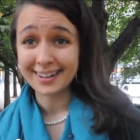
JJIE launches Arts site:
Not too many years ago, the still photo was the domain of the professional and the dedicated hobbyist. Today, when school children routinely have iPhones at the ready, we’ve reached the point where the world is our collective subject, caught from a billion different angles.
And what a glorious addition to our gallery of life’s great riches it is, this daily chronicle of human life, the capture of otherwise forgotten moments, the tally of the small order of life's minutiae as well as the dramatic breaths in time that bring about outcries of emotion, the sparking of movements, the fall of governments.
With so many photos taken by so many photographers, though, the prevailing opinion may be that the art form has been eroded, that the cascade of mostly mediocre images pummels the viewer into disinterest. The riveting scene from a few years ago now ranges from mildly interesting to old hat.
But the truth is, stunningly wonderful photography exists at the top of the populace’s current body of work. These are the images produced by those who know the science of the trade and practice it with a passion, every day. You see their work in the giant metro papers, but also in galleries. The composition, if you will, is there. A nice picture, that on closer inspection tells a story that demands your attention and stirs your emotions.
Today, JJIE introduces Bokeh, what you might call our fine arts site. Here is a place where some very fine still images will reside, along with photo essays and written essays on the art of photography.
Some of this work will include those at top of the field. On Monday, we begin publishing photographer Richard Ross’ work. Ross spent five years photographing and interviewing some 1,000 inmates in youth detention centers all across the country.
Other work on Bokeh (the name roughly means, ‘the aesthetic quality of the blur in that part of the unfocused image’) includes our own. Today, a photo essay, “Saturday in the Park,” by JJIE photographer Clay Duda runs on the site. This is our attempt to capture the voices and thoughts of kids on common, but important, questions of the day. (Click here or see the introduction to the essay below.)
And finally, through our partnerships with groups such as VOX Teen Communications, you’ll see the work of young photographers, the way they see the world and the issues dominant in their lives.
Youth as its subject and the quality of the work are the common threads in the photography of the professionals, the up-and-coming photojournalists and the dedicated beginners congregating on Bokeh.
What you see on Bokeh is meant to be craft, strong and compelling, a home for the best work on the issues of juvenile justice.
We hope you enjoy it.







